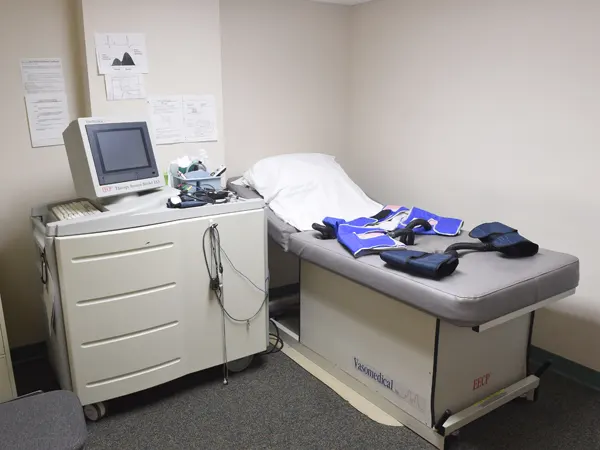The health expert on Wednesday urged the media to play an active role in educating the public about Enhanced External Counterpulsation (EECP) therapy in Pakistan for high blood pressure, coronary artery disease, and elevated lipid levels.
Renowned cardiologist Dr. Raja Mehdi Hasan while speaking to PTV news explained that Enhanced External Counterpulsation (EECP) therapy is a safe surgical procedure for treating angina (chest pain) in people with coronary artery disease.
EECP machines help blood vessels open new pathways around blocked arteries, he said, adding that EECP treatment is a natural bypass for chest pain.
In response to a question, he said this type of therapy could reduce patients’ need for medication and increase their ability to remain active without experiencing symptoms.
Thousands of people around the world are receiving EECP therapy, Dr Mehdi said, adding that the treatment relieves symptoms of heart disease that cannot be controlled by drugs or surgery. can
EECP therapy does not require a hospital stay, he said, adding that patients can return to regular visits immediately after treatment.
He said that people with angina problems are expected to benefit from treatment with the new device.
EECP treatment applies pressure to blood vessels in your lower limbs. The pressure increases blood flow back to your heart, so your heart works better. When your heart pumps better, symptoms ease.
This type of therapy can also encourage blood vessels to open new pathways for blood to flow to your heart. These pathways eventually become “natural bypass” vessels that help relieve symptoms of angina if your coronary arteries are narrowed or blocked.
During EECP therapy, you relax or nap on a padded table while air fills the cuffs around your lower limbs. You’ll feel the cuffs grow tighter around your legs and bottom until they reach full treatment pressure.
EKG and blood pressure monitors synchronize inflation and deflation with your heartbeat.
The cuffs inflate as soon as your heart rests, increasing blood supply to the arteries that deliver blood to your heart. Then they quickly deflate to make it easier for your heart to pump again.










